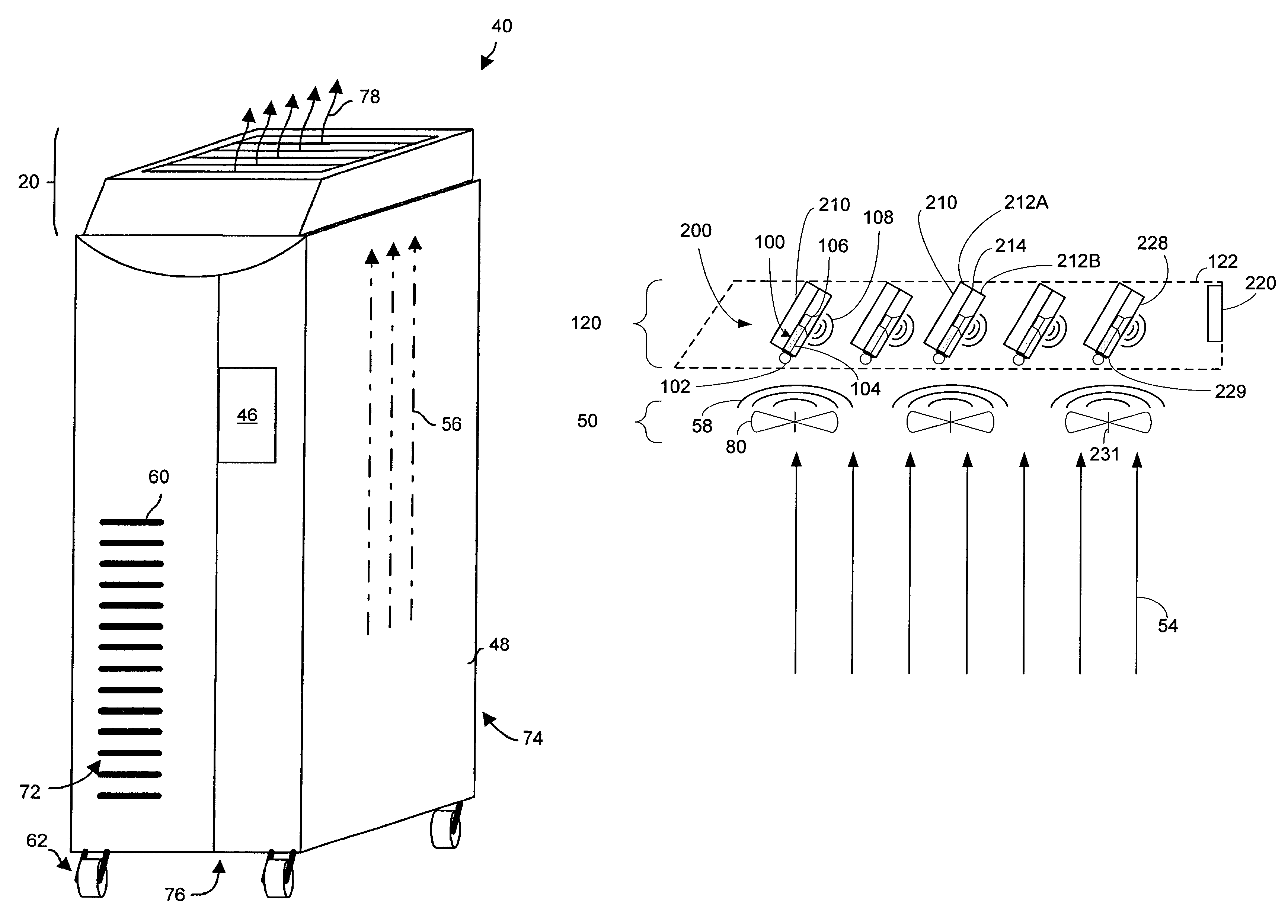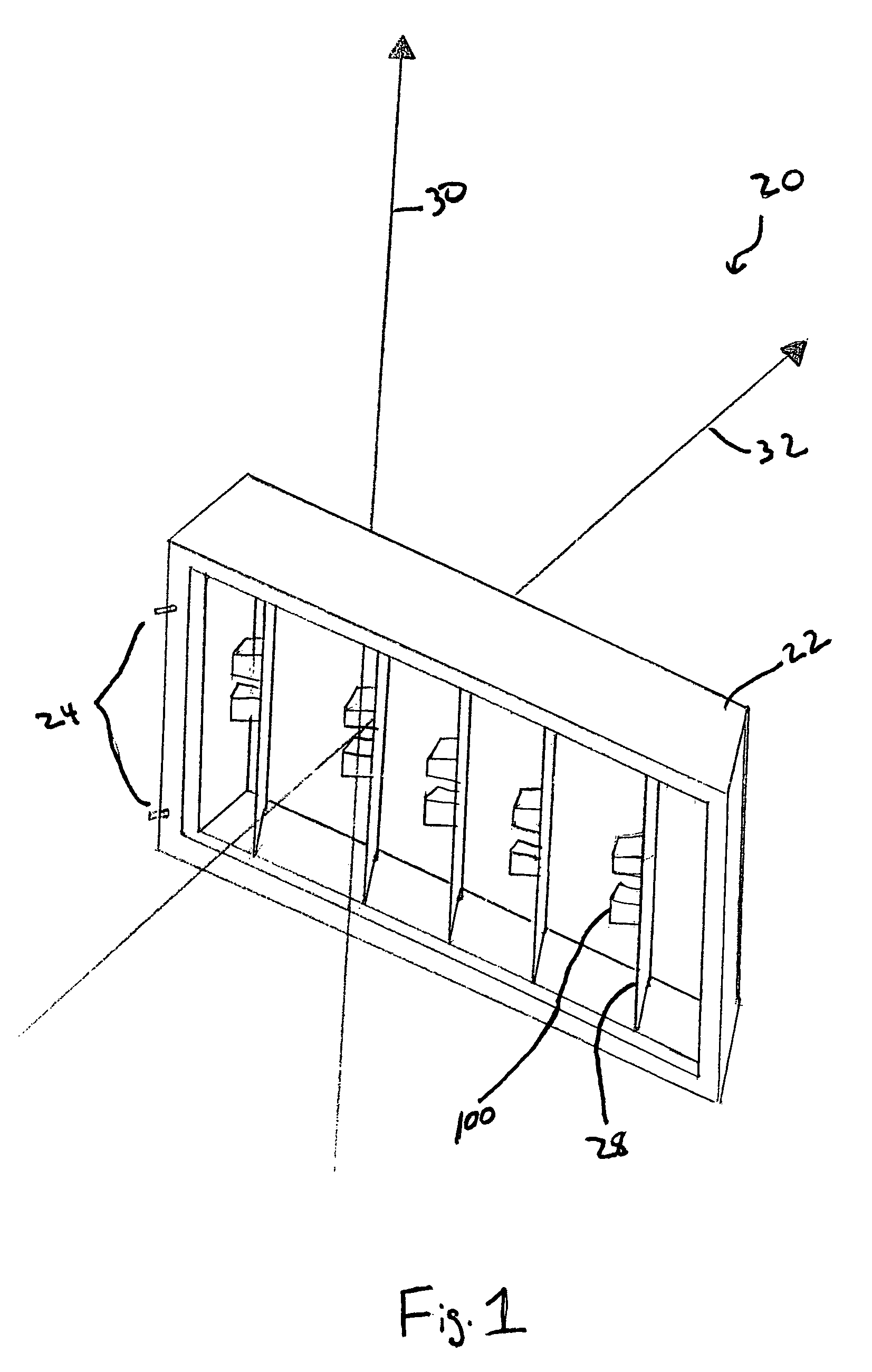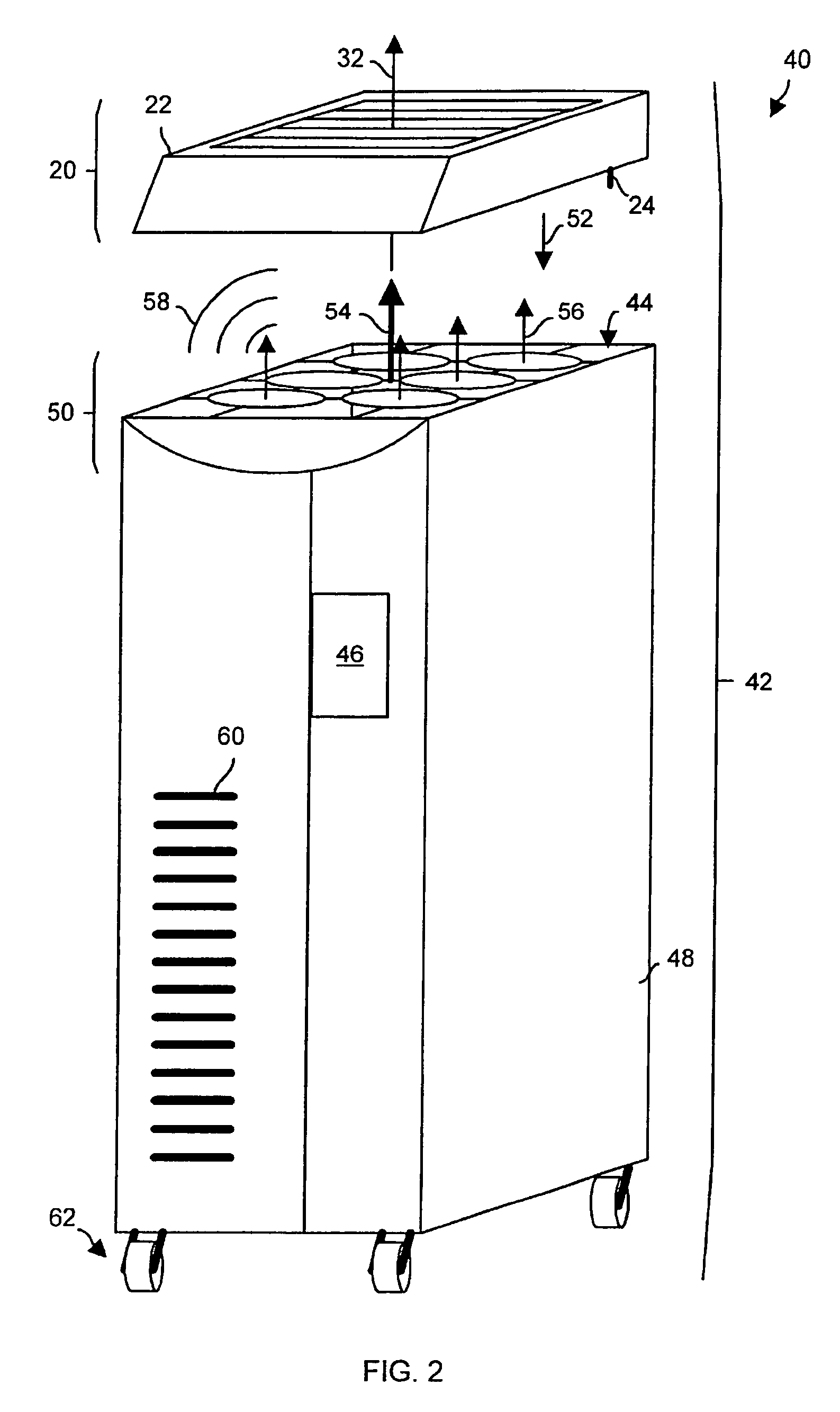Method and system for attenuating noise from a cabinet housing computer equipment
a cabinet housing and computer equipment technology, applied in noise generation, instruments, ear treatment, etc., can solve the problems of insufficient noise reduction of muffling devices, insufficient muffling devices, and inability to adequately reduce noise of muffling devices, so as to reduce noise, eliminate sound, and ensure sound reduction
- Summary
- Abstract
- Description
- Claims
- Application Information
AI Technical Summary
Benefits of technology
Problems solved by technology
Method used
Image
Examples
Embodiment Construction
[0021]The invention is directed to techniques for attenuating noise from a cabinet that houses computer equipment using a noise cancellation system which receives fan noise through microphones and transmits an identical, out-of-phase anti-sound wave through speakers mounted proximate the fans. The anti-sound waves cancel the fan sound wave, thereby eliminating the sound. In another embodiment of the invention, the noise cancellation system is used in combination with lateral noise absorption members which define surfaces that form sides of airflow channels therethrough. The surfaces are substantially non-parallel to a direction of an airflow pathway through the cabinet when the lateral noise absorption members are properly installed with the cabinet. Accordingly, the invention can provide substantial and superior ear protection particularly to people in the vicinity of the cabinet who do not have the benefit of other ear protection (e.g., earplugs, headphones, etc.).
[0022]FIG. 1 sho...
PUM
 Login to View More
Login to View More Abstract
Description
Claims
Application Information
 Login to View More
Login to View More - R&D
- Intellectual Property
- Life Sciences
- Materials
- Tech Scout
- Unparalleled Data Quality
- Higher Quality Content
- 60% Fewer Hallucinations
Browse by: Latest US Patents, China's latest patents, Technical Efficacy Thesaurus, Application Domain, Technology Topic, Popular Technical Reports.
© 2025 PatSnap. All rights reserved.Legal|Privacy policy|Modern Slavery Act Transparency Statement|Sitemap|About US| Contact US: help@patsnap.com



